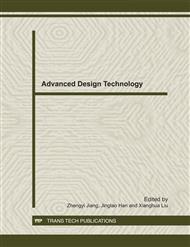p.724
p.728
p.732
p.739
p.743
p.750
p.754
p.759
p.764
An Error Compensation Method for Structural Responses and Sensitivities
Abstract:
Abstract. The computation of the responses and their design sensitivities play an essential role in structural analysis and optimization. Significant works have been done in this area. Modal method is one of the classical methods. In this study, a new error compensation method is constructed, in which the modal superposition method is hybrid with Epsilon algorithm for responses and their sensitivities analysis of undamped system. In this study the truncation error of modal superposition is expressed by the first L orders eigenvalues and its eigenvectors explicitly. The epsilon algorithm is used to accelerate the convergence of the truncation errors. Numerical examples show that the present method is validity and effectiveness.
Info:
Periodical:
Pages:
743-749
Citation:
Online since:
December 2011
Authors:
Price:
Сopyright:
© 2012 Trans Tech Publications Ltd. All Rights Reserved
Share:
Citation:


